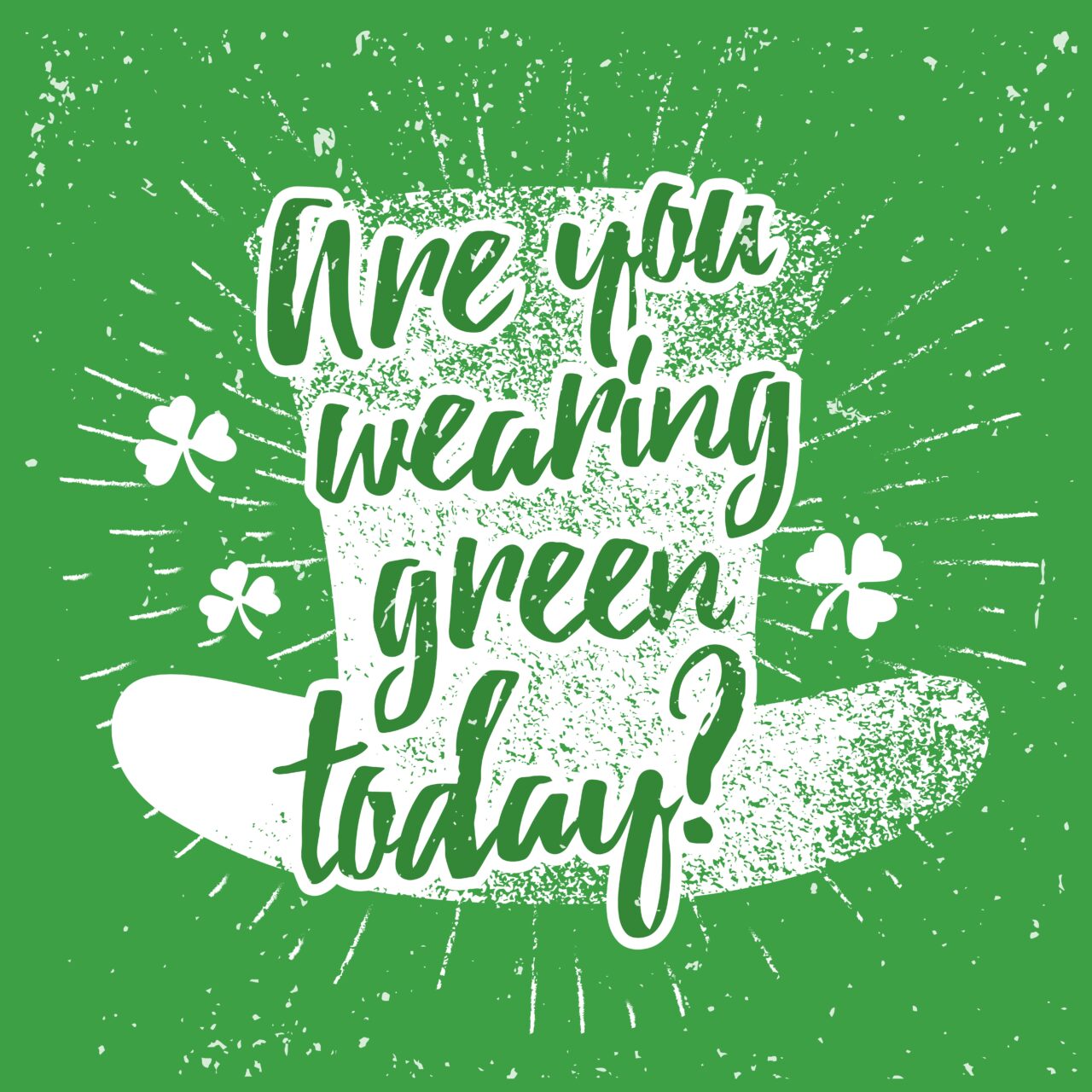Gallery
Photos from events, contest for the best costume, videos from master classes.
 |  |
 |  |
 |  |
 |  |
 |  |
 |  |
The tradition of wearing green and participating in most St. Patrick’s Day activities is rather obnoxious. It’s like a national “Mean Girls” day, because on St. Patty’s “we wear green.” Regardless of whether or not you’re Irish, you will likely have to take a few extra steps to find a pot of gold, consume some Irish Ale and When deciding what to wear on St Paddy’s Day, green is the most common go-to garment for revellers, but why? Find out all the folklore behind donning green for St Patrick’s Day and whether this is an optional dress-code or a must-have for celebrating the annual Irish event. A Guide to Etiquette on St. Patrick's Day. St. Patrick’s Day is a time for revelry, wearing green, enjoying Irish delicacies and having an excuse to pinch people if they’re not wearing green. On St. Patrick's Day, here's how you can avoid being pinched: You MUST be WEARING green. Green nails, hair, face paint, stickers, etc. don't count. The green must be part of your clothing. Your green MUST BE VISIBLE to avoid being pinched. The only way your green undergarments will count is if you're showing them. Rules: If you don’t wear green on St. Patrick’s Day, you get pinched! Simple as that. There’s only one easy rule to St. Patrick’s Day and that is to wear at least a little bit Also notable, the color green itself only became linked to St. Patrick's Day in the U.S., drawn from the green on the Irish flag and in reference to the Emerald Isle, as Ireland is sometimes called. Early on, the color of St. Patrick's Day was blue. Americans switched it to green each March 17, and so, too, has the rest of the world. St. Patrick's Day's spiritual meaning is rooted in Christianity. At its core, St. Patrick's Day is a religious holiday celebrated by Catholic, Lutheran, Anglican, and Eastern Orthodox Christians.. The man who inspired the holiday, Saint Patrick, is best known for bringing Christianity to Ireland in the 5th century. What Color Do Protestant Irish Wear on St. Patrick’s Day? Some wear orange—a nod to the House of Orange and the Protestant heritage of Northern Ireland. It’s controversial. It’s symbolic. It’s the other side of Ireland’s complicated, beautiful, broken harmony. But on Paddy’s Day, most people wear green regardless—because for one In addition to the vibrant tradition of wearing green clothing on St. Patrick’s Day, incorporating green jewelry into the day’s attire has become a cherished practice for many. Pieces like the Emerald Green Shamrock Brooch or the Irish Harp Brooch with emerald CZ, offered by The Irish Jewelry Company, not only enhance the festive spirit but St. Patrick’s Day usually conjures images of partying, Catholicism, Irish nationalism and, perhaps most famously, the color green: green clothes, green shamrocks, green beer and green rivers. On March 17, St. Patrick’s Day brings out a sea of green—worn by both the Irish and the not-so-Irish alike. But have you ever wondered why green is the go-to color for this festive day? And In the United States, green is a central element of the festivities. This is perhaps most famously seen in Chicago, where the Chicago River is dyed green for the occasion. On a more personal level, tradition holds that failing to wear green on St. Patrick’s Day may subject you to a playful pinch. Dressing in green on St. Patrick's can trace its roots to leprechaun legends, as well as a sign of Irish defiance. Each year on St. Patrick’s Day, tens of thousands of Americans add green to People began pinching those who didn’t wear green as a reminder that leprechauns would sneak up and pinch green-abstainers. Rules for wearing green on St. Patrick's Day: There aren't any official rules. Lots of advice, but no official green wearing rules to live by on St. Paddy's Day. Most of the advice suggested that you should be wearing Revellers attend the Saint Patrick’s Day parade on March 17, 2019 in Dublin, Ireland. Saint Patrick, the patron saint of Ireland is celebrated around the world on St. Patrick’s Day. According to legend Saint Patrick used the three-leaved shamrock to explain the Holy Trinity to Irish pagans in Monday, March 17 is St. Patrick's Day, celebrating all things Irish in the U.S. and around the world. Cities celebrate with parades, bar crawls and more. The answer, according to tradition and a touch of historical context, is: you should probably avoid wearing orange on St. Patrick’s Day. While green is the dominant color of the celebration, orange carries a complicated history in Ireland, and its association with Protestantism can make it a less-than-ideal choice for the festivities. As the celebration of St. Patrick’s Day spread, so did the popularity of this vibrant color, making it a symbol of Irish pride and festivity. Today, donning green has become an essential part of the holiday, allowing people everywhere to partake in the joy and camaraderie that comes with this beloved occasion. St. Patrick’s Day is the perfect day to excuse copious amounts of drinking. It is one of those rare days when going on bar crawls, wearing green, and being drunk with friends (and maybe even family) is considered completely socially acceptable, so you might as well take advantage of it. Here are some universal rules to consider if you take part in this holiday tradition. You must wear green clothing (rather than dye your hair green), which must be visible for all to see. Sorry, green socks tucked inside your sneakers won't do unless you can see them.
Articles and news, personal stories, interviews with experts.
Photos from events, contest for the best costume, videos from master classes.
 |  |
 |  |
 |  |
 |  |
 |  |
 |  |